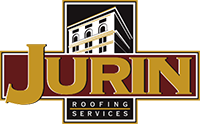Roof Maintenance Saves Money
If you enjoy throwing money away on unnecessary roof repairs and replacements, don’t read this.
So you don’t like the thought of throwing money away unnecessarily, huh? Who does, right?
You may not realize that there is an easy, cost effective way to get the most mileage out of your roof system and save thousands of dollars over time…regular roof inspections and maintenance.
Maintaining your roof system is as important as changing the oil in your car. Without routine maintenance, your roof, like a motor, will begin to breakdown. Catching problems before they occur is a great way to maintain your car as well as your roof.

New roof systems, when maintained from the beginning, can outlast their warranties. Annual or semi-annual inspections help to locate deficiencies and get them repaired before they get severe enough to allow moisture into the building damaging insulation, decking and items stored inside the building.
Some manufacturers require inspections and roof membrane cleaning to maintain their warranties for their roof systems.
What is the best time to have my roof inspected?
The best times to complete roof inspections are in the spring and fall. Spring inspections help find issues created over the winter and fall inspections help to free the roof of debris and prepare the roof for the up-coming winter.
It is a good idea to have your roofs inspected before and after significant storms as well. Hail, heavy rains and snow can leave a roof system battered and in need of repairs.


Who should inspect my roof?
Roof inspections should be completed by competent roofing contractors who are familiar with the roof system you may have on your building.
Single ply roof systems, metal roofs, shingle roofs, and built-up roof systems all have different types of deficiencies that require different types of repairs that more often than not need to be completed by an authorized installer for the manufacturer.
Improper repairs could result in issues with warranty claims. Proper repairs to a roof system is a must.
EXAMPLE: Repairing EPDM roof systems with asphalt products such as roof cement can damage the membranes creating further problems with the roof and potential voiding of the warranty. It is suggested that a reputable roofing contractor complete the needed repairs to your roof system.

If your roof system is currently under warranty make sure that you hire a contractor who is authorized to work on your roof. You can check with your manufacturer and they can confirm your contractor is authorized or help you contact a local authorized applicator.
What should my roof inspection include?
There are several typical maintenance procedures that should be included with a roof inspection. Roof inspection should include but are not limited to:

The deficiency areas can be marked on the roof using paint, keel markers, etc. for quick location of issues for repair.
Roof Debris Removal
Your roofing contractor should make sure the roof is clear of vegetative debris such as leaves, branches etc. Removing these items from the roof will help the flow of water from the roof system.
These issues can be avoided just by cleaning the debris from the roof. As long as the maintenance staff can complete the tasks safely you may be able to do the job on your own. Full inspection and repairs should be completed by professionals.

Full Report of Issues Found and Repairs Needed
A roof inspection completed by a professional should include a written report, which may or may not also include a photo inspection report, listing roof issues and deficiencies found along with recommendations for repairs. Some companies will repair items up to a certain agreed upon amount but additional repairs and large repairs may need to be addressed with a proposal.
A roof CAD drawing with roof deficiencies marked is also sometimes submitted with the report as a means of keeping track of the issues located during each inspection. Leak tracking and ongoing maintenance within an area can help show the “trending” roof issues with each inspection and allow for better future planning.

Infrared Roof Moisture Scans
Infrared scanning can be a great tool used in the process of roof maintenance. Infrared roof scanning can locate moisture trapped in a roof system that cannot be seen though a visual inspection.
Moisture contained within a roof system absorbs energy slower than dry roofing material. In addition, wet insulation or roofing material cools slower than dry roofing insulation, thereby creating a difference in the radiant heat loss after heat gain stops which allows for the detection of potential moisture through thermal imaging. The infrared imager detects heat patterns across surfaces by detecting infrared heat being emitted by an object and converting it to visible light.
With wet insulation comes energy loss. With energy loss comes money down the “roof” drain!
Wet insulation can be located, outlined and removed. New insulation and membrane can then be replaced and your roof system restored to proper functionality.
So what are you waiting for?
When is the last time you had your roof inspected? Out of sight out of mind is not the way to go here. There are many avenues to travel with roof inspections. The main concern is that they are completed. If you want your vehicle to last 100,000 miles you should change the oil and take care of it. Why would your roof system be any different?
Jurin Roofing Services offers 43-point roof inspections along with a full report of issues, recommendations, full color photo report and a detailed roof CAD drawing to help you track and maintain your most costly asset. Contact us today to start protecting your investment!







